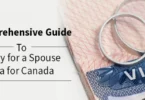Writing a CV for international job applications can be a daunting task. With different countries having varied expectations and formats, crafting the perfect CV requires understanding and adaptation. Whether you’re a seasoned professional or just starting your career, knowing how to present yourself effectively is crucial. This guide will walk you through the steps to create a compelling CV that stands out to employers abroad.
Understanding the Global CV Landscape
Different CV Formats Around the World
CV formats can differ significantly from one country to another. For example, European CVs often include personal details such as date of birth and marital status, while US resumes typically exclude such information. Familiarizing yourself with the preferred format of the country you’re applying to can give you a significant advantage.
Cultural Considerations in CV Writing
Cultural norms also play a role in CV writing. In some countries, it’s common to include a photo, while in others, it’s not recommended. Researching the specific cultural expectations can help you tailor your CV appropriately.
Structuring Your CV
Personal Information
Start your CV with your personal information, including your name, contact details, and LinkedIn profile if applicable. Ensure that your contact information is current and professional.
Professional Summary
Craft a concise professional summary that highlights your key achievements and career goals. This section should be tailored to align with the job you’re applying for and grab the employer’s attention.
Work Experience
Highlighting Relevant Experience
Focus on work experiences that are relevant to the job you’re applying for. Use bullet points to list your responsibilities and achievements in each role.
Using Metrics to Showcase Achievements
Quantify your accomplishments with metrics when possible. For example, “Increased sales by 20% over six months” provides a clearer picture of your impact.
Education
Include details of your educational background, listing your degrees, institutions, and any relevant courses. If you have international qualifications, convert them to the local equivalent to avoid confusion.
Skills and Competencies
List the skills and competencies that are most relevant to the job. This includes both soft skills, like communication, and hard skills, like proficiency in specific software.
Languages
If you speak multiple languages, make sure to list them and indicate your level of proficiency. Multilingual skills are highly valued in global job markets.
Certifications and Awards
Include any certifications or awards that are relevant to the job. Highlight prestigious or industry-recognized credentials.
Writing a Professional Summary
Crafting a Strong Opening Statement
Your professional summary should open with a strong statement about your career achievements and goals. It should quickly convey why you’re a great fit for the role.
Tailoring Your Summary to the Job Description
Customize your summary to reflect the key skills and experiences mentioned in the job description. This demonstrates that you have carefully reviewed the job requirements.
Detailing Your Work Experience
The STAR Method for Describing Achievements
Use the STAR method (Situation, Task, Action, Result) to describe your achievements. This approach helps you provide a clear and structured account of your accomplishments.
Emphasizing Transferable Skills
Highlight skills that are transferable across different industries and roles. This can help you stand out even if you’re changing fields or countries.
Adjusting Your Experience to Fit International Standards
Adapt your experience descriptions to meet international standards, ensuring that your achievements are presented in a way that is easily understood by global employers.
Education Section Tips
Listing Degrees and Relevant Courses
Detail your degrees and any relevant coursework. If you have a degree that is not commonly known internationally, provide a brief explanation of its equivalence.
Converting International Qualifications
Use conversion tools or reference guides to convert your qualifications into the equivalent local standards to avoid confusion for international employers.
Skills and Competencies
Identifying Key Skills for the Role
Match your skills to those required in the job description. This shows that you have the specific skills needed for the role.
Showcasing Soft and Hard Skills
Balance your CV by showcasing both soft skills (like teamwork and leadership) and hard skills (like technical expertise).
Languages
How to Present Language Proficiency
Clearly indicate your proficiency in each language, using standard descriptors like “fluent,” “intermediate,” or “basic.”
Relevance of Multilingual Skills
Emphasize how your language skills can benefit the employer, especially if the job requires interaction with international clients or teams.
Certifications and Awards
Including Relevant Certifications
List certifications that are relevant to the job you’re applying for, especially those that are recognized internationally.
Highlighting Prestigious Awards
Include any awards that demonstrate your achievements and recognition in your field.
Tailoring Your CV for Different Roles
Adapting Your CV for Various Industries
Customize your CV to reflect the requirements of different industries, emphasizing relevant experiences and skills.
Customizing for Specific Job Descriptions
Tailor your CV for each job application by aligning it with the specific job description and requirements.
Formatting Your CV
Choosing the Right Layout
Select a clean and professional layout that makes your CV easy to read. Use headings, bullet points, and consistent formatting.
Tips for a Professional Appearance
Ensure that your CV has a consistent font, size, and color scheme. Avoid using excessive colors or fonts that can distract from the content.
Avoiding Common Formatting Mistakes
Steer clear of common mistakes like inconsistent formatting, typos, or excessive use of jargon. These can make your CV appear unprofessional.
Common Mistakes to Avoid
Overloading with Information
Avoid including unnecessary details that don’t add value to your CV. Focus on relevant information that highlights your qualifications.
Ignoring Cultural Differences
Be mindful of cultural differences and avoid including information that may not be appropriate or expected in the target country.
Using Inappropriate Language
Use clear and professional language. Avoid slang or overly complex words that might confuse international readers.
Proofreading and Final Touches
The Importance of Proofreading
Thoroughly proofread your CV to eliminate errors and ensure it is polished. Consider asking a friend or professional to review it.
Getting Feedback from Others
Seek feedback from mentors or colleagues who can provide valuable insights and suggestions for improvement.
Submitting Your CV
How to Send Your CV Internationally
Follow the application instructions provided by the employer. Consider the best format for submission, whether it’s via email, an online portal, or another method.
Following Up After Submission
After submitting your CV, send a polite follow-up email to express your continued interest in the role and inquire about the next steps.
Conclusion
Writing the perfect CV for international job applications involves careful consideration of format, content, and cultural expectations. By following the guidelines outlined in this article, you can create a compelling CV that stands out to employers worldwide. Tailor your CV to each job application, and don’t forget to proofread and seek feedback to ensure it’s polished and professional. Good luck with your job search!
Search for Canada migration opportunities below





